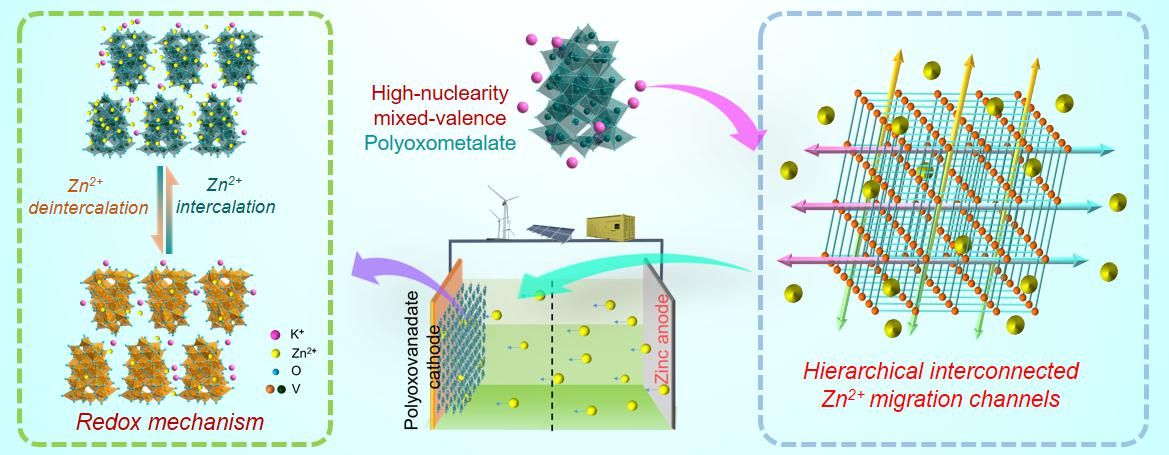Recently, Prof. Junwei Zhao’ group from Henan Key Laboratory of Polyoxometalate Chemistry, College of Chemistry and Chemical Engineering published their innovative achievements on Nano Energy [First high-nuclearity mixed-valence polyoxometalate with hierarchical interconnected Zn2+ migration channels as an advanced cathode material in aqueous zinc-ion battery, 74 (2020) 104851, IF=15.548].
Zinc-ion batteries (ZIBs) have fascinated increasing attention and made some rapid progresses because of high safety, low cost as well as environment amity. However, exploring and discovering suitable Zn2+ host materials with high energy and power densities still remain a tremendous and ongoing challenge. Prof. Junwei Zhao’ group integrated their research advantage in polyoxometalate synthesis with the energy storage research advantage of Dr. Kai Yang to put forward the research on Zn2+ storage properties of nanosized high-nuclearity polyoxometalate clusters (HNPCs) in aqueous ZIBs for the first time. In the work, the 3-D orderly packing of nanosized clusters in the microstructure can engineer multidimensional interconnected Zn2+ migration channels, which can endow the host material with high electron and Zn2+ conductivities and high-efficiency Zn2+ migration behavior. This work not only provides a new zinc-ion battery research platform of HNPCs and opens up a new understanding of the Zn2+ storage mechanism in the POM host, but also demonstrates a tremendous and promising application potential of HNPCs in aqueous batteries. In the paper, Dr. Kai Yang, a postdoctoral teacher of College of Chemistry and Chemical Engineering, is the first author. Dr. Yuanyuan Hu, a youth teacher of College of Chemistry and Chemical Engineering is a co-first author. Prof. Junwei Zhao and Prof. Yufei Song from Beijing University of Chemical Technology are the joint corresponding authors. Henan University is the first corresponding institution for the published work.
This work was financially supported by the National Natural Science Foundation of China, the Program for Innovation Teams in Science and Technology in Universities of Henan Province, China Postdoctoral Science Foundation, the Major Project of Science and Technology, Education Department of Henan Province, the Program of First-Class Discipline Cultivation Project of Henan University and the 2019 Students Innovative Pilot Plan of Henan University. Furthermore, the work was also substantial supported by Henan Key Laboratory of Polyoxometalate Chemistry and College of Chemistry and Chemical Engineering.
DOI: j.nanoen.2020.104851
The paper links: https://doi.org/10.1016/j.nanoen.2020.104851



